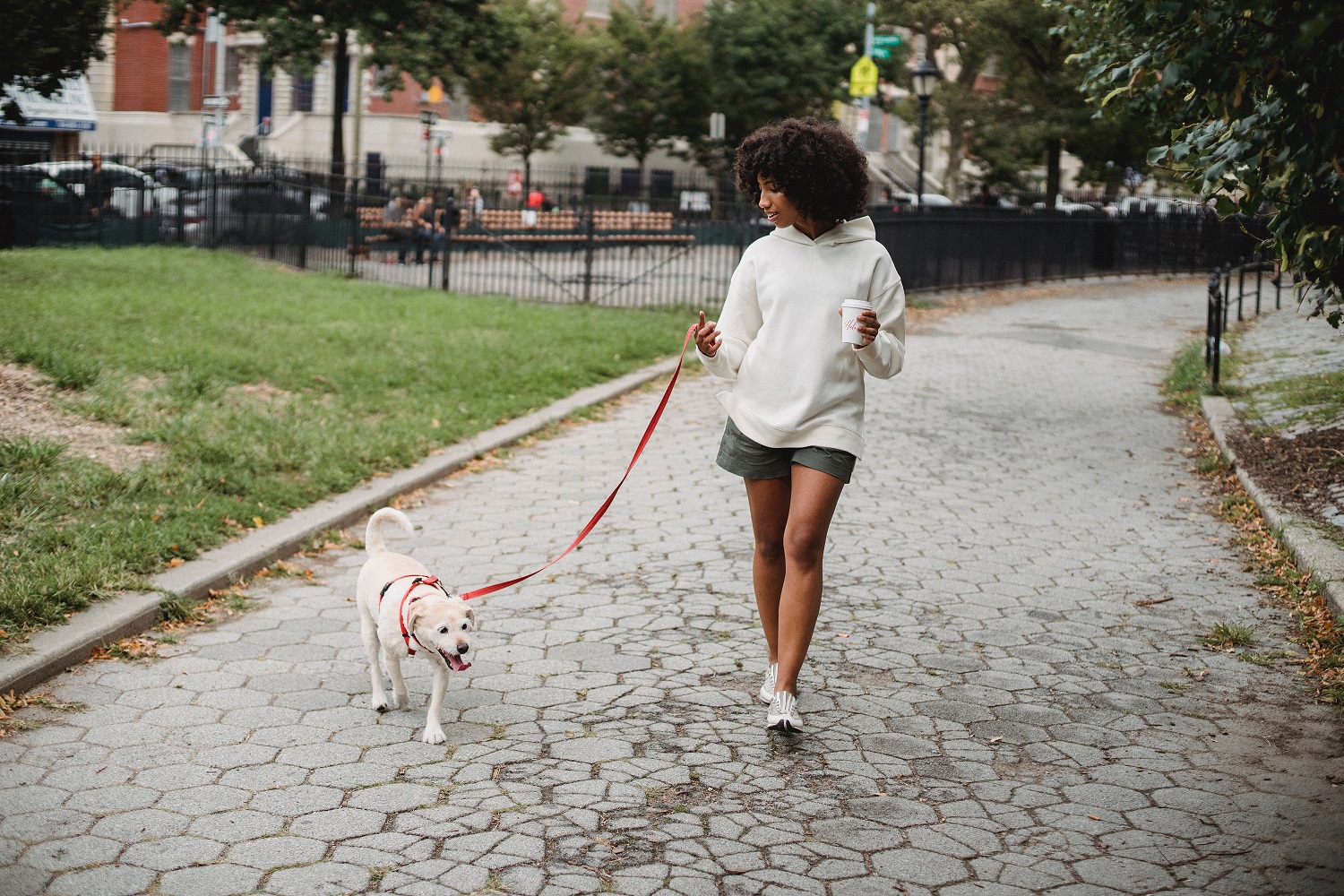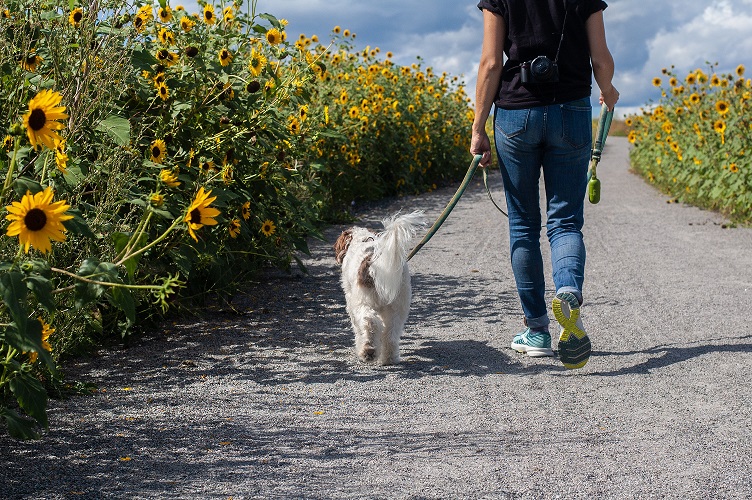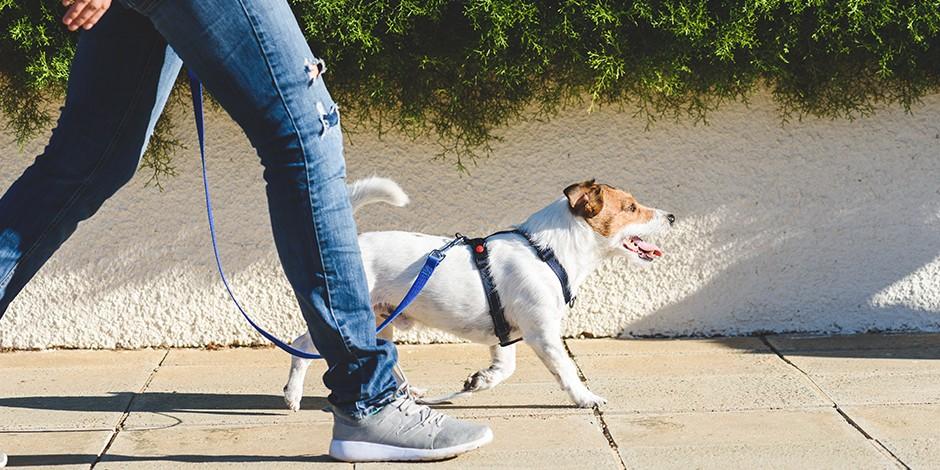It is essential for all pets to exercise and get fresh air daily. Regular walks can help maintain your pet’s weight, improve cardiovascular fitness, lower blood pressure, strengthen muscles and bones, and decrease stress. It is also a great way for you and your pet to bond and socialise.
While ‘walkies’ can be the most exciting part of your dog’s day, it is important to know the proper walking technique. Many pet owners simply put on a leash and walk out the door, which causes dogs to pull on the leash. This can hurt you as the walker and can seriously injure your dog as well.
Teaching your dog to walk on a loose leash requires patience and time, but it is worth it to ensure both you and your pooch can be safe outside, taking relaxing strolls together.
Why is it important to walk with a loose leash?
The first thing to note is that leashes are absolutely necessary. You must not bring your dog to a public area without a leash, especially if your dog isn’t trained or is prone to get excited. That’s why learning proper walking technique is so important, so you can enjoy the time outside together as companions. While being on a leash is not instinctive for dogs, they are quick learners and can determine how to react based on the cues provided by their owners.
The right equipment …
Harness: Instead of a traditional dog collar, a chest-led harness takes the pressure off the dog’s sensitive neck area by distributing the pressure more evenly around the body.
Leash: You need a leash that can extend up to 2 meters or more in length. This will allow enough slack, so your dog has the freedom to explore while also giving you control.
Treats: This will be helpful so you can reward and reinforce the right behavior.
How to train your dog to walk on a loose leash

Photo by Samson Katt from Pexels
1. Start off with the leash
It is recommended to start training at home or in the garden. Your dog will be relaxed in this environment and it will be much easier for them to learn new behaviours in a place where they won’t be easily distracted. The goal is to teach your dog using treats/rewards. You can start by moving to another part of your home or garden and calling your dog to your side. You may need a few treats to entice your dog at the beginning. Repeat this process several times without the leash and then introduce it once your dog starts following you naturally.
2. Short walks
Once you have some success at home, it’s time to move outside. Begin with short walks in your area and on routes where you won’t encounter many people or other pets. This way you can train your dog to walk beside you without having to pull the leash in an emergency. The goal is to teach your dog that when they walk next to you with a loose leash, they get to move forward but as soon as they pull on the lead, the walk will stop.
3. Stop walking
Stop walking as soon as the leash begins to tighten; stand still, stay quiet, and don’t move forward until your dog has returned to your side. There is no need to pull the leash in response. Simply stand and wait or walk a couple of steps in the opposite direction to get your dog to come by your side. Remember to praise/reward your dog when they return to your side.
4. Be alert
Try to anticipate any distraction that might make your dog pull on the leash, such as a person or another pet. Be proactive and increase the space between your dog and the distraction, or get their attention with a treat before they have a chance to lunge. Be prepared with a firm grip on your leash to maintain control in case your dog suddenly charges, particularly during those first few walks.
5. Consistency
Consistency is key. Loose-leash walking training takes time but it’s a great opportunity for you and your dog to bond. For your dog to learn this technique, it is advisable to practice daily, ideally at the same time every day. You must be consistent with the above steps and your dog will slowly recogonise that they are rewarded for walking beside you and will become natural to them. Not only will this make all future walks more enjoyable, but it will also keep your dog safe in public places; by not pulling on their leash and hurting themselves, aware that they should stay close by your side, and free to roam but under your control in the event of an emergency.

Photo by Delphine Beausoleil on Unsplash
4 Characteristics of loose leash walking
- There is no leash tension and the leash rests in a “J” shape (as in all the photos).
- Your dog walks at your pace, by your side.
- Your dog doesn’t suddenly pull the lead or lunge.
- Your dog mostly ignores distractions like noises, other pets, or people.
There are several free and paid resources available online to learn more about loose leash walking.
If you want to make sure your dog gets the daily exercise he needs for his physical and mental health,, why not book a loving dog walker on Gudog.co.uk or Gudog.ie to take your dog for a fun walk each day, with lots of water breaks and photos updates on the route for you.
What is Gudog?
Gudog is the easiest way to find & book the perfect dog Sitter. Thousands of loving Sitters are ready to care for your dog like family! All bookings come with Veterinary Care & Free Cancellation.
